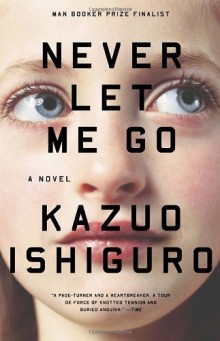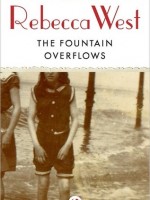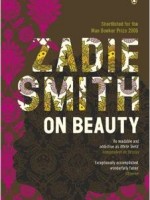 Never Let Me Go
Never Let Me Go
Fiction
Vintage Books
2006
288

In life as in art, sometimes the most familiar or everyday things can become terrifying in their ordinariness. In his studies of neurosis and hysteria, Freud invented a new word – “unheimlich”. While it’s difficult to translate specifically, (‘unhome-like’, ‘unnative’), it refers to a sense of the uncanny, that is deriving terror or fear from something that actually appears familiar and normal. It applies to Oliver Hirschbiegel’s new film Downfall, about the last days of Hitler, and it perfectly captures the events of Kazuo Ishiguro’s new book Never Let Me Go.
On the surface, it’s a story about a boarding school home to students who seem like any other idealistic youths. The narrator, Kathy H, tells us about her time at Hailsham retrospectively and her language, on various levels hints at what really went on. She speaks of “guardians”, “carers”, “completing” and “donors” and the fact that none of the teenagers will ever be able to have children. There is an emphasis on health, and smoking is seriously frowned upon.
While Ishiguro’s characters – Stevens the butler in The Remains of the Day and Masuji Ono in An Artist of the Floating World – are often bound by a sense of duty, In Never Let Me Go, this is taken to a sinister extreme. Despite its bucolic setting, Hailsham begins to feel like prison, and the ‘students’ are in fact nothing more than clones. Not clones in the ditzy, sardonic Stepword Wives way, but cloned for one purpose only – to be living donors to medical science until they ‘complete’.
In the course of their education, Kathy, Tommy, Ruth and the other students are encourage to paint and be artistic. A mysterious woman known only as Madame arrives every month to select the best work for what’s known as The Gallery. The visits are highly anticipated, with each student keen to impress because they believe that their art is selected to be studied for an important reason. Tommy and Ruth get into a relationship and they, like all the characters, believe that being artistic means having a chance of salvation – of a deferral from donation – if they can prove that they have a soul and the capacity for love. Ishiguro initially tries to say that art is redemptive, but like much of the expectation in this book, this concept is thwarted.
Madame represents the outside world, the world cut off from the suffocating insularity of Hailsham. The outside world itself is a metaphor for the life these clones know nothing about and that medical science deems them unentitled to. On a day trip to Norfolk to find Ruth’s ‘possible’ (ie the person whose DNA she was created from), none of the characters attempt to run away. As Ishiguro himself says, escape wasn’t an option for these characters, because escape is rarely an option in our own lives. Like many of Ishiguro’s narrators, Kathy is unreliable but the construct of memory in the book adds to the sense of distortion. As she recounts her experiences, she says things like, “I’m not sure, I vaguely remember” and “I could be wrong” in recalling fuzzy images of her days at Hailsham.
It is a genuinely chilling book that is quite a departure from Ishiguro’s Big House work in The Remains of the Day and his literary homage to Japan – An Artist of the Floating World. While not quite science fiction, it deals with morality and mortality in a brilliant, clinical way. Its subject matter is unsettling but it is timely and very powerful. ![]()




